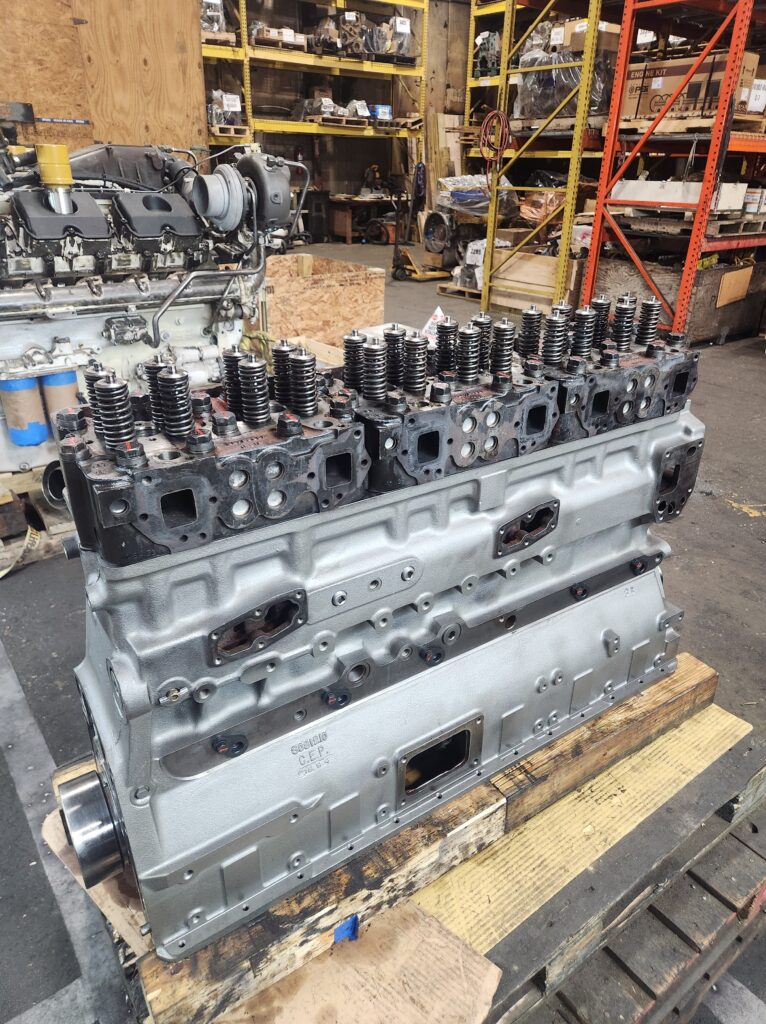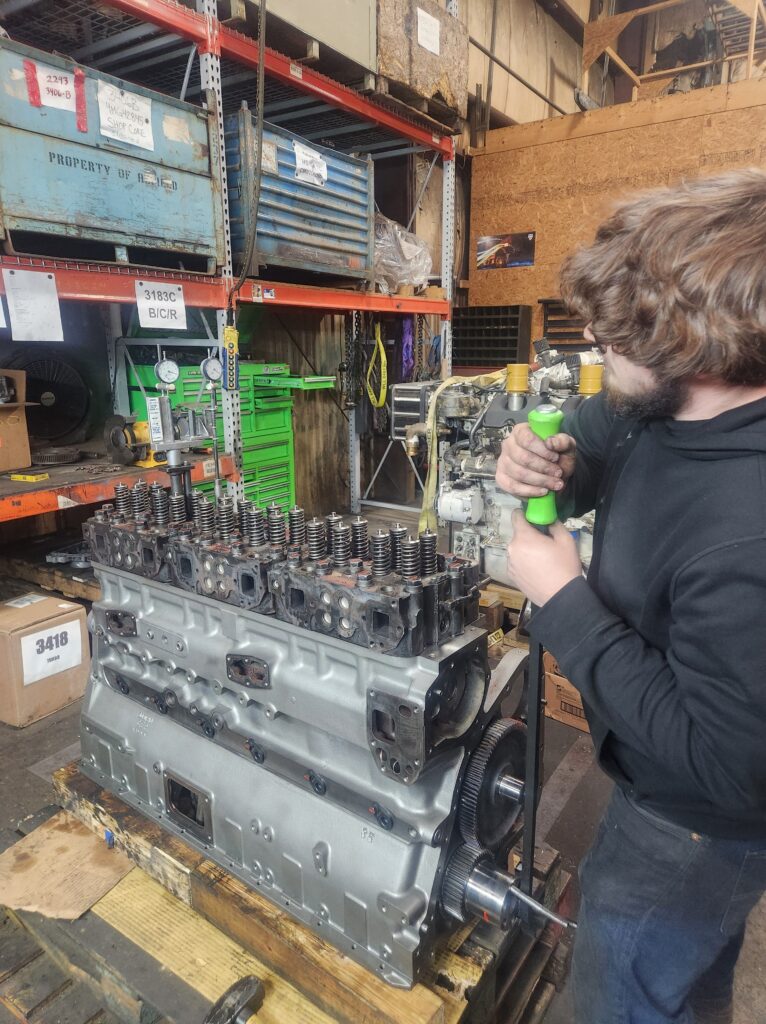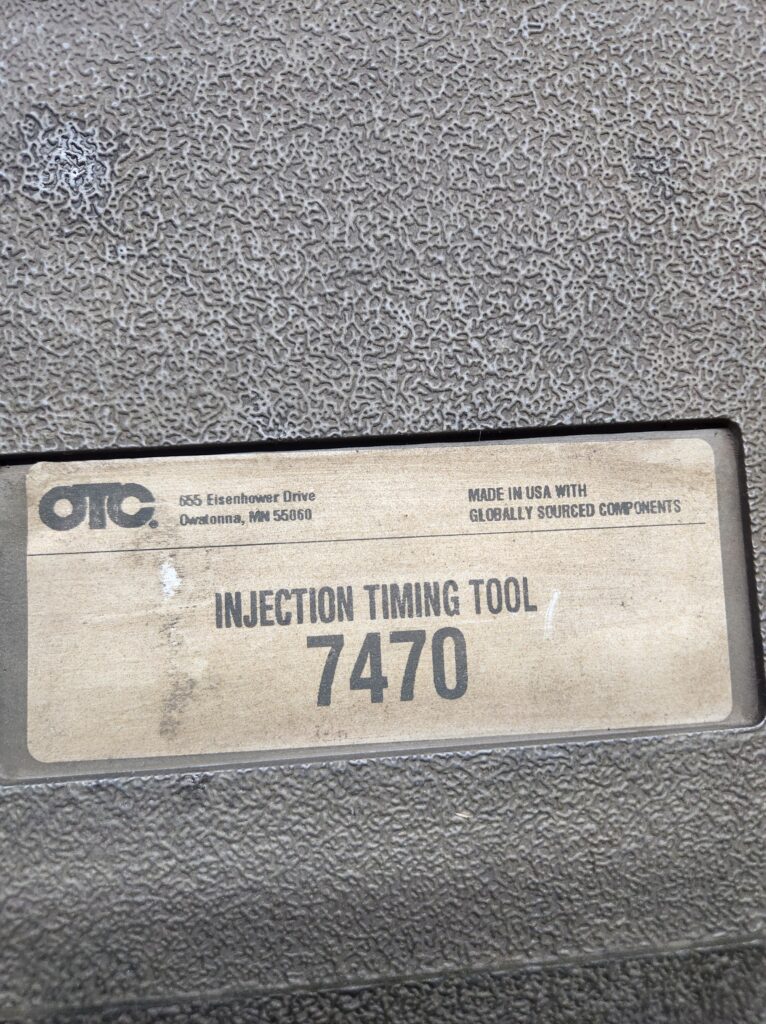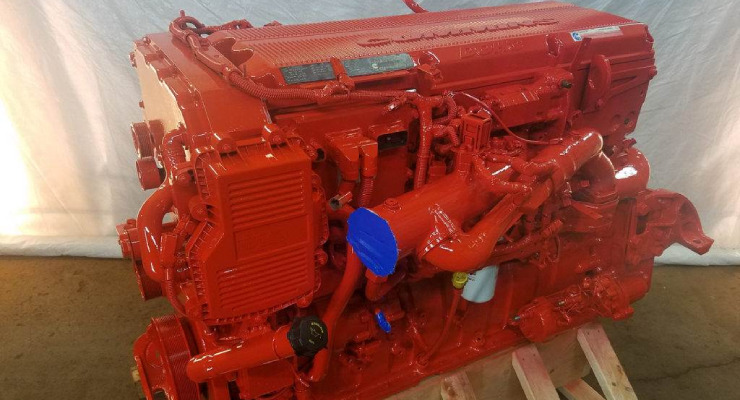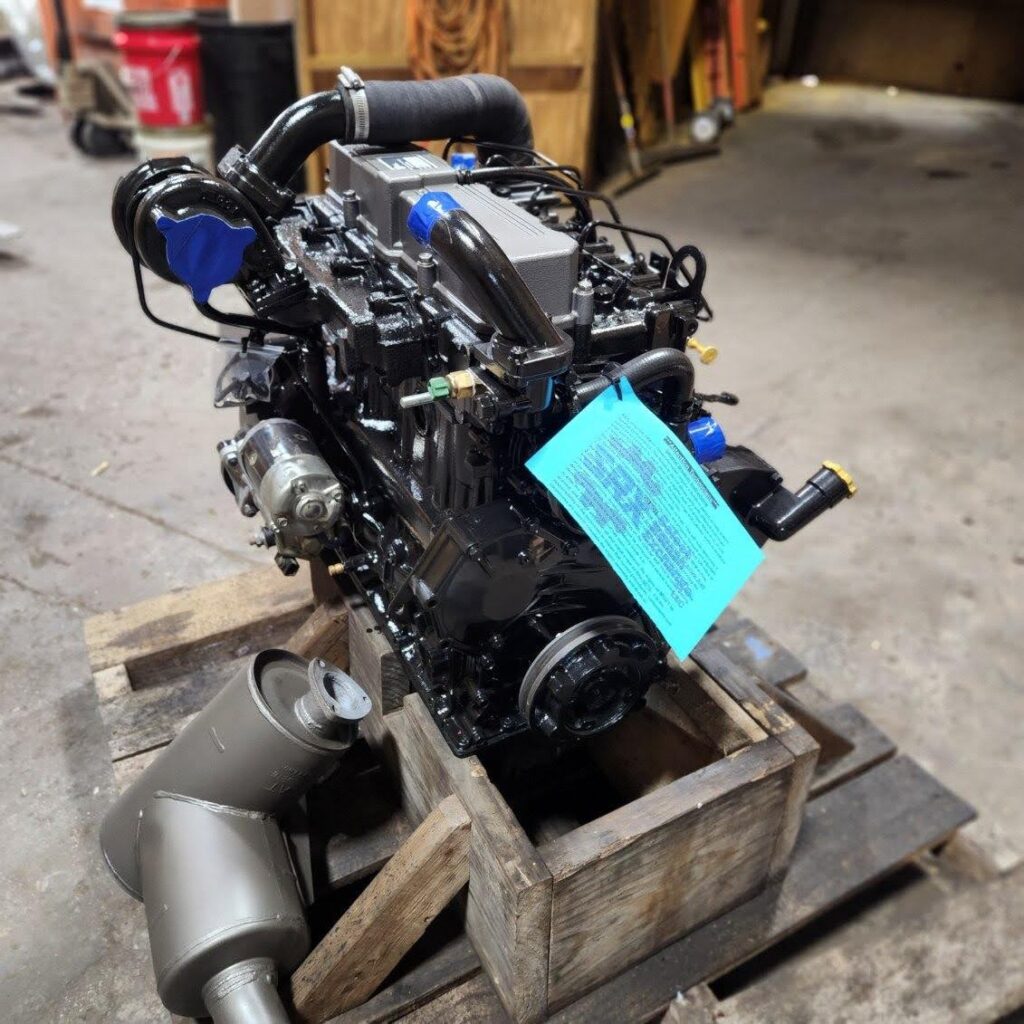
By Select Reman Exchange
The Caterpillar 7.1L (CAT 7.1) engine has become a hot topic among diesel mechanics — some see it as a refined evolution of the Perkins 6.6, while others view it as a solid motor buried under layers of emissions complexity.
Recently, Clay from Select Reman Exchange shared an inside look at one of these engines in our shop. His perspective adds a real-world layer to the excellent teardown and review by Joshua from the Update Channel on YouTube. Here, we’ll explore what both experts say — and what it all means for owners, operators, and rebuilders.
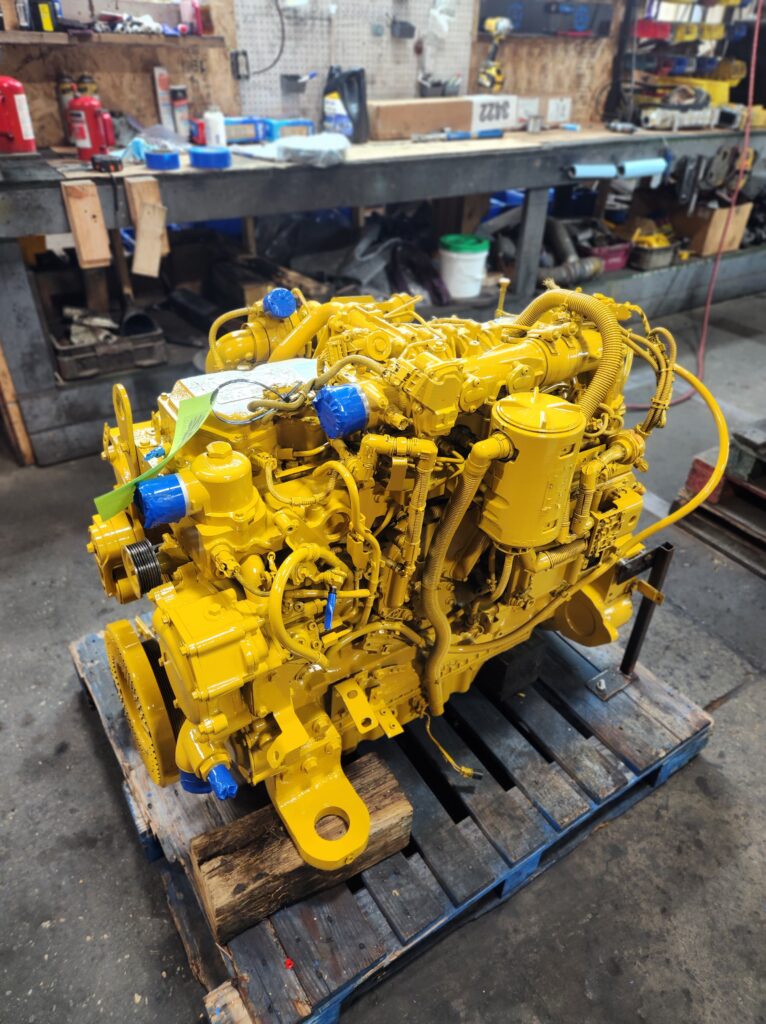
Perkins Roots with a CAT Badge
At its core, the CAT 7.1 is a rebadged and refined Perkins 6.6. The block, cam train, front housing, and oil cooler setup are largely identical. But CAT added plenty of emissions hardware to meet Tier 4 Final standards:
- Twin turbochargers instead of a single turbo.
- EGR and DPF systems for emissions compliance.
- SCR aftertreatment mounted externally from the block.
As Clay notes, these additions make what used to be a simple, serviceable engine far more complex. The extra plumbing and sensors add layers of difficulty for shops rebuilding or troubleshooting them.
“It’s a Perkins engine at heart — they build a great motor. But with the twin turbo and all the emissions gear, it’s not as easy to work on.” – Clay, Select Reman Exchange
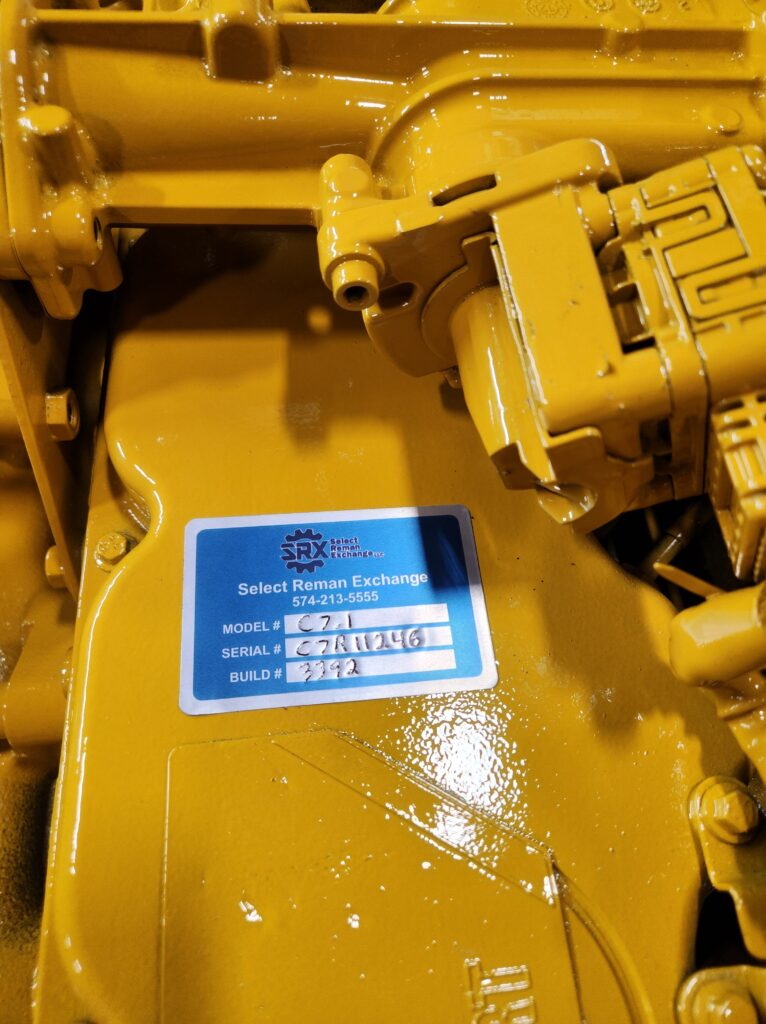
Hydraulic Lifters: Smart or Short-Sighted?
One of the CAT 7.1’s standout features is its hydraulic lifter design, which eliminates the need for valve adjustments. It’s a mechanic’s time-saver during assembly — no overhead setting required.
However, as Clay points out, the long-term reliability of hydraulic lifters in high-hour industrial use is still up for debate. Once worn, they’re harder and more expensive to service than traditional solid tappets.
Joshua echoes this in his teardown, noting that the valvetrain design simplifies factory setup but reduces rebuild flexibility later in the engine’s life.
Service Complexity: The Rocker Shaft Challenge
Both Clay and Joshua highlight one of the engine’s biggest service frustrations — the rocker shaft assembly. It’s a single solid unit with multiple springs and tight tolerances.
“You need three guys to set it if you don’t have the special tool. The first time we did one, it was a pain.” – Clay
This design, while precise, makes the engine less technician-friendly. CAT likely optimized for factory production speed, not field rebuilds — a trend that’s becoming more common as OEMs prioritize emissions packaging over accessibility.
What’s Done Right
Despite the complaints, the CAT 7.1 isn’t a bad engine by any stretch. Joshua’s teardown credits several improvements:
- Cleaner common rail injection for better startup and less smoke.
- Improved alignment dowels on the front structure.
- Elimination of fragile plastic retainers found in earlier Perkins models.
- Easier injector access and simplified fuel system layout.
- 10,000–12,000 hour lifespan before rebuild or replacement.
Clay backs that up with his experience — the engine runs “smooth as glass” once fueled and started, barely vibrating at idle.
The Downsides: Fasteners, Oil Pans, and Design Quirks
Joshua’s teardown exposes several frustrating engineering choices:
- Inverted Torx bolts throughout the engine.
- Oil pan spacer design requiring major teardown to reseal.
- Flat tappet camshaft that drops lifters during removal.
- Injector trim file codes that are overly long and confusing.
Each issue alone isn’t a dealbreaker, but together they make the 7.1 more tedious to service than comparable engines from Cummins or John Deere.
Real-World Longevity & Rebuild Economics
In the field, most CAT 7.1 engines last around 10,000–12,000 hours before needing significant work. That’s respectable, but the lack of replaceable liners means full rebuilds are costlier.
For small contractors or municipal fleets, that impacts ROI. A non-linered block often means replacement instead of rebuild — another sign of OEMs favoring new unit sales over old-school serviceability.
Can the CAT 7.1 Be Simplified?
Clay raises a thought-provoking question:
“Could you just run it like a 6.6 again? One turbo, no EGR, simple and reliable?”
Technically, yes — you could retrofit a single-turbo manifold and delete the emissions gear. But practically (and legally), that’s not viable in regulated markets. Still, it shows where the mechanic community’s heart lies: in rebuildable, straightforward, long-lived diesel platforms.
Final Thoughts
The CAT 7.1 embodies modern diesel evolution — powerful, efficient, and clean-running, but undeniably more complex. It’s a mechanically solid engine trapped in an emissions maze.
Joshua’s teardown provides the technical critique; Clay’s shop-floor view brings the reality. Together, they paint a fair picture: this engine performs exceptionally once running — but getting there can take patience, teamwork, and a well-stocked tool chest.
Watch the Original Video
Check out Joshua’s full teardown here:
CAT 7.1 Diesel Engine Teardown & Review on YouTube
Related Reading (Internal Linking Suggestions)
- Inside a CAT C6.6 Rebuild: Why Simplicity Still Wins
- How Emissions Systems Changed Diesel Rebuilds Forever
- Common Rail Fuel Systems Explained for Rebuilders
If you’re looking to rebuild or source a CAT 7.1 or 6.6, our team at Select Reman Exchange can help. We’ve got multiple engines in process and can customize to your fleet needs.
📞 Contact us today to discuss your next build — or drop a comment if you’ve got experience simplifying these setups.

